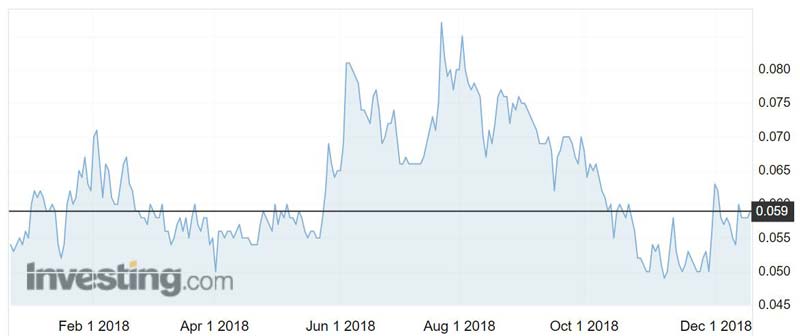Myanmar Metals’ Bawdwin lead and zinc mine is the gift that just keeps giving

Pic: Schroptschop / E+ via Getty Images
Myanmar Metals has made yet another decent lead and zinc find at its Bawdwin project in Myanmar.
The junior explorer (ASX:MYL) has uncovered its fourth new mineralised lode, known as the “Yegon Ridge Lode”, with a hit of 16m at 7 per cent lead, 1.5 per cent zinc, 145 grams per tonne (g/t) silver and 0.9 per cent copper from 170m.
The news edged shares up more than 5 per cent to an intra-day high of 6.1c just after market open on Tuesday.
Before the Second World War, Bawdwin was the largest producing lead mine and one of the largest producing silver mines in the world.
The mine currently hosts a resource of 81.8 million tonnes at 4.8 per cent lead, 2.4 per cent zinc, 0.24 per cent copper and 119 parts per million (0.012 per cent) silver.
But drilling continues to uncover more high-grade lead, zinc and silver outside of the current resource.

Recent drilling in the Meingtha Gap area has delivered a high-grade hit of 9m at 14.38 per cent lead, 16.73 per cent zinc and 344g/t silver from 146m.
Anything over 10 per cent lead, 12 per cent zinc and 50g/t silver is generally considered high-grade.
Myanmar Metals is also finding mineralisation in areas it did not expect to, as well as “persistently finding cobalt, nickel and copper”.
“We are now just starting to look outside the historical mining envelope and we are discovering high-grade mineralisation in areas which were, in the case of the Meingtha Gap, too difficult to access for historical miners or where the mineral system was unknown, as in the case of the Yegon Ridge Lode,” chief John Lamb told investors.
“To be clear, we are seeing grades similar to those described by British geologists at Bawdwin a century ago and that supported one of the highest-grade lead-silver-zinc mines in recorded history.”
Mr Lamb told Stockhead some of the narrower hits are “ridiculously high”.
A recent hit included 35 per cent lead, 32 per cent zinc and 137 ounces per tonne of silver.
“This is in an area that has never been mined and it’s never been drilled,” he said.
“So we’re in that sort of virgin country.”
Mr Lamb said production records show that past miners were pulling out zinc equivalent grades of up to 50 per cent.
“Everywhere we go where they couldn’t get to or didn’t know about we’re hopeful that we’ll see those sort of numbers and we’re beginning to see that,” he said.
- Subscribe to our daily newsletter
- Bookmark this link for small cap news
- Join our small cap Facebook group
- Follow us on Facebook or Twitter
Mr Lamb said the initial three lodes accounted for the vast majority of Bawdwin’s historical production, but it looks as if there is still plenty more left to find.
“We have now discovered a fourth, with several more high-priority ‘lode-type’ targets identified for drilling in the coming year,” he said.
A resource upgrade is due out before the end of January next year.
UNLOCK INSIGHTS
Discover the untold stories of emerging ASX stocks.
Daily news and expert analysis, it's free to subscribe.
By proceeding, you confirm you understand that we handle personal information in accordance with our Privacy Policy.








